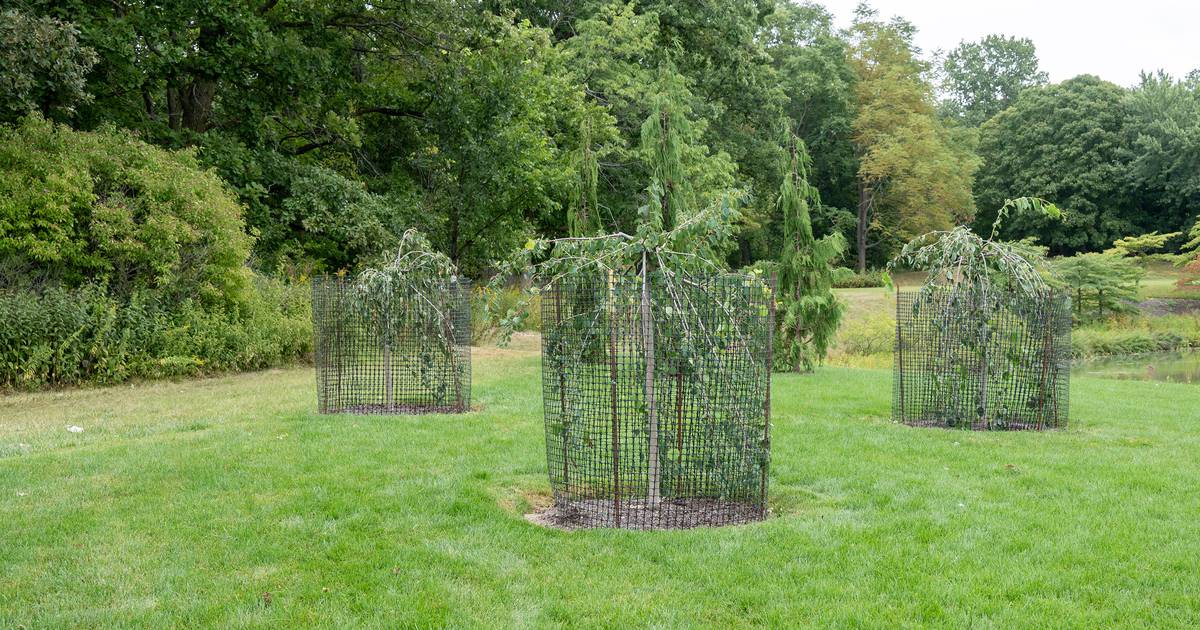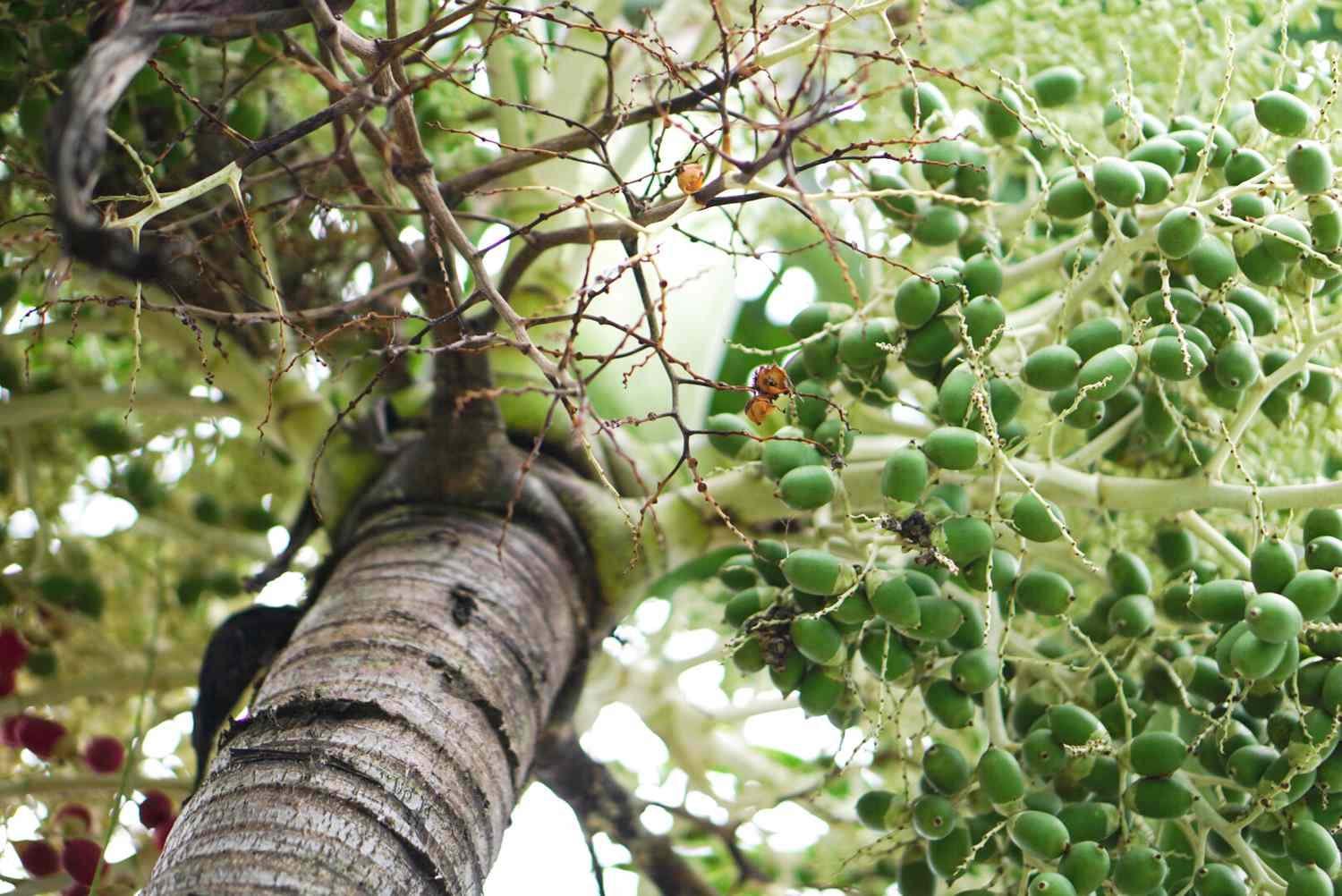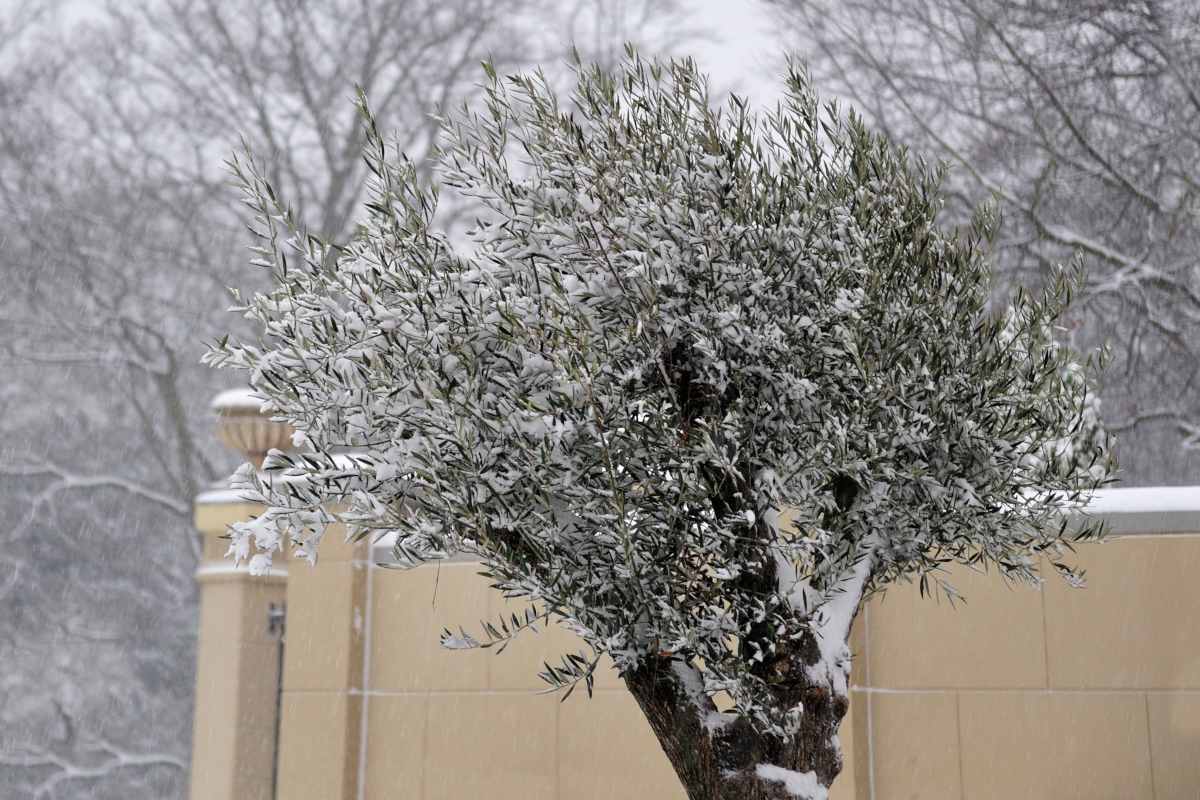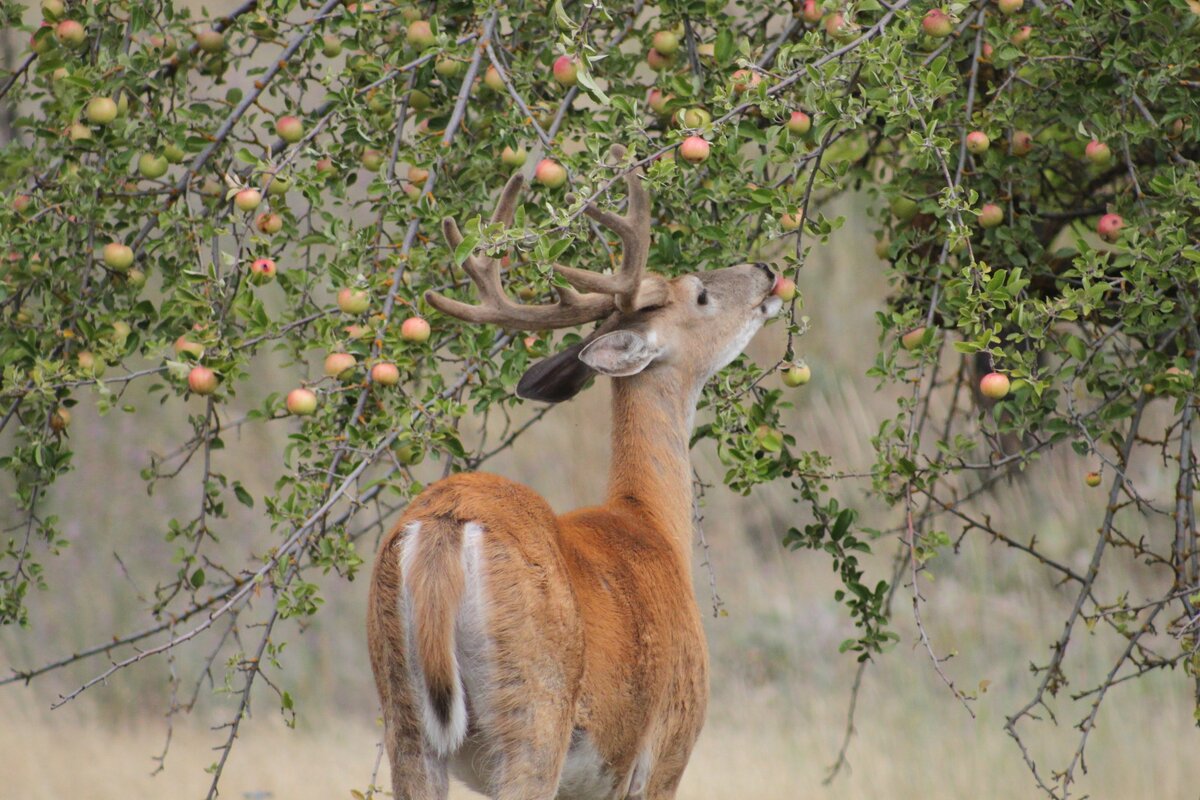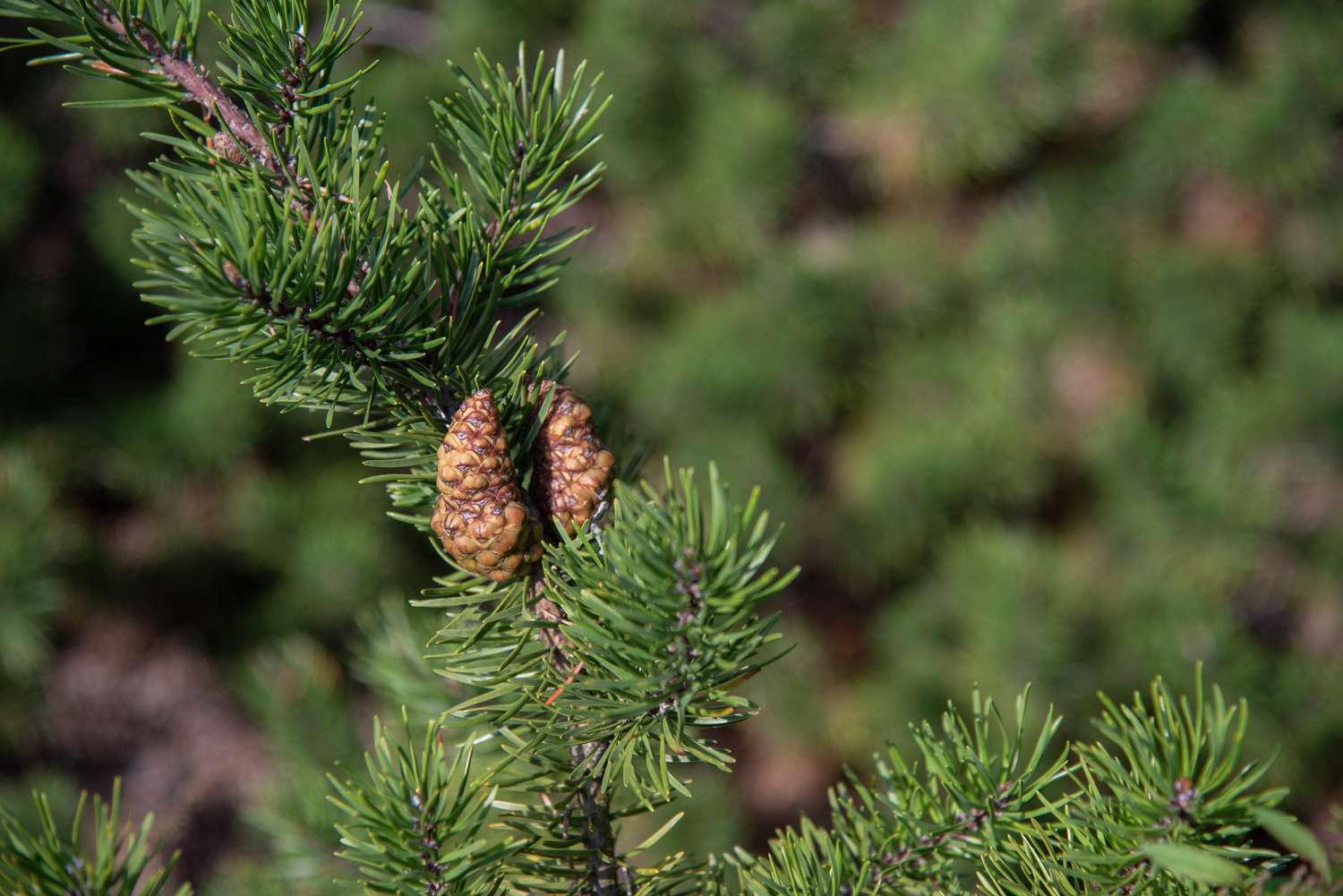Home>Gardening Tips and Tricks>Problem Solving>How To Stop Sumac Trees From Spreading
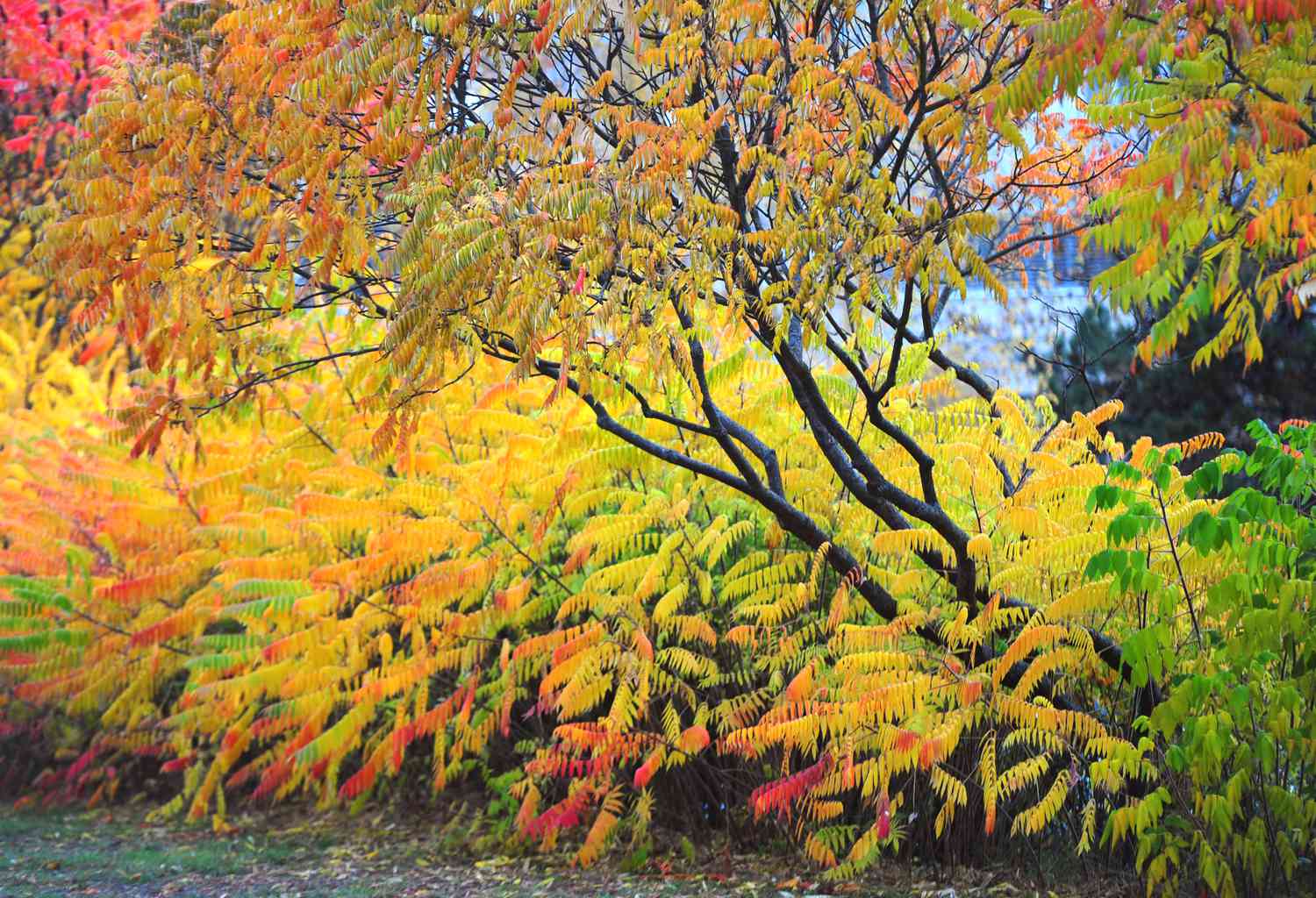

Problem Solving
How To Stop Sumac Trees From Spreading
Modified: February 2, 2024
Learn effective problem-solving techniques to prevent the spread of sumac trees in your yard. Stop this invasive species in its tracks with our expert tips and methods.
(Many of the links in this article redirect to a specific reviewed product. Your purchase of these products through affiliate links helps to generate commission for Chicagolandgardening.com, at no extra cost. Learn more)
Table of Contents
- Introduction
- Understanding Sumac Trees
- Identifying the Spreading Behavior
- Risk of Uncontrolled Spread
- Reasons to Stop the Spread of Sumac Trees
- Step-by-Step Methods to Prevent Sumac Trees from Spreading
- Regular Tree Trimming and Pruning
- Removal of Stolons and Suckers
- Proper Disposal of Cuttings and Debris
- Chemical Control Options
- Creating Physical Barriers
- Monitoring and Maintenance Practices
- Conclusion
Introduction
Sumac trees, known for their vibrant foliage and clusters of red berries, are a common sight in many landscapes. While they can add beauty and interest to your outdoor space, these trees have a propensity for spreading and can quickly take over an area if left unchecked. If you’re concerned about the spread of sumac trees and want to prevent them from becoming invasive, this article is for you.
In this guide, we will explore the characteristics of sumac trees, their spreading behavior, and the potential risks associated with uncontrolled growth. We will also discuss the importance of stopping the spread of sumac trees and provide practical tips and methods to effectively manage and prevent their expansion.
Understanding how sumac trees spread is crucial in developing a strategy to control their growth. Sumacs reproduce through both seed dispersal and vegetative propagation. The berries they produce contain small seeds that can be carried by birds or animals to new locations, allowing the tree to establish itself in different areas. Additionally, sumacs can also spread through stolons and suckers, which are underground stems and shoots that emerge from the root system and grow into new plants.
The uncontrolled spread of sumac trees can have detrimental effects on the surrounding ecosystem. They can outcompete native vegetation, reducing biodiversity and altering habitat structures. Sumacs are also known to have allelopathic properties, meaning they release chemicals that can inhibit the growth of other plants, further impacting the ecological balance.
Preventing the spread of sumac trees is not only important for the health and stability of the local environment but also for maintaining the aesthetics and functionality of your property. By implementing the methods and practices outlined in this article, you can effectively manage and control the spread of sumac trees, ensuring a well-maintained and balanced outdoor space.
Understanding Sumac Trees
Sumac trees, scientifically known as Rhus spp., are deciduous shrubs or small trees that belong to the Anacardiaceae family. They are native to various regions around the world, including North America, Europe, and the Middle East. Sumac trees are well-known for their colorful foliage, with leaves turning hues of red, orange, and yellow in the fall.
There are several species of sumac trees, the most common being staghorn sumac (Rhus typhina) and smooth sumac (Rhus glabra). They typically grow in clumps or colonies and can reach heights of 15 to 30 feet, with some varieties growing taller. Sumac trees have compound leaves with serrated edges, arranged in a pinnate pattern along the stem.
One distinctive feature of sumac trees is their clusters of small red berries, known as drupes, which form in late summer or early fall. These berries are a valuable food source for wildlife, providing nourishment for birds and small mammals.
Sumac trees are adaptable and can thrive in a variety of soil types, from sandy to clayey, as well as in different moisture conditions, ranging from dry to moist. They are also tolerant of various light levels, including full sun and partial shade.
While sumac trees can provide aesthetic appeal and attract wildlife, their spreading behavior can become problematic if not properly managed. The ability of sumacs to reproduce through seed dispersal and vegetative propagation makes them highly adaptable and resilient.
Understanding the growth habits of sumac trees is essential in effectively controlling their spread. Stolons, which are horizontal aboveground stems, can grow outward from the parent tree, giving rise to new shoots and establishing new plants. Suckers, on the other hand, are shoots that emerge from the underground root system and can grow into independent trees if not controlled. These methods of vegetative propagation can greatly contribute to the expansion of sumac colonies.
By gaining a thorough understanding of sumac tree characteristics and growth patterns, you can develop effective strategies to control their spread and maintain a well-managed landscape.
Identifying the Spreading Behavior
Identifying the spreading behavior of sumac trees is crucial in order to implement appropriate management techniques and prevent their unchecked growth. By understanding the various methods through which sumacs propagate and establish new plants, you can effectively identify potential areas of concern and take necessary action.
One common way that sumac trees spread is through the dispersal of seeds. Sumac berries contain small seeds that can be consumed and transported by birds, mammals, or even humans. These seeds can then be deposited in different areas, allowing the sumac tree to establish itself in new locations. To identify this spreading behavior, keep an eye out for bird activity near sumac trees, as well as the presence of sumac seedlings in areas where they may have been deposited.
Another method of spread is through the growth of stolons. Stolons are aboveground horizontal stems that can extend from the base of the sumac tree. These stems can produce adventitious roots and give rise to new shoots, allowing the sumac to expand its colony. To identify this spreading behavior, look for the presence of long, horizontal stems above the ground that are connected to the main sumac tree. These stems may have new shoots or leaves emerging from them.
Suckering is another way that sumac trees can spread. Suckers are shoots that emerge from the underground root system of the sumac tree. These shoots can grow into new plants if left unchecked. To identify this spreading behavior, inspect the base of the sumac tree for the presence of shoots or new stems emerging from the ground.
In addition to these spreading behaviors, it’s important to monitor the overall growth and density of sumac colonies. Sumac trees have a tendency to form dense thickets, which can quickly take over an area if left uncontrolled. Keep an eye out for areas where sumacs are growing closely together, which can indicate a potential issue with spreading.
By familiarizing yourself with these spreading behaviors and regularly monitoring your property, you can identify areas where sumac trees may be spreading and take proactive measures to prevent their uncontrolled growth.
Risk of Uncontrolled Spread
The uncontrolled spread of sumac trees can pose various risks and have negative impacts on the surrounding ecosystem and your property. It is important to be aware of these risks in order to understand the importance of managing and preventing the spread of sumac trees.
One major risk of uncontrolled sumac tree spread is their potential to become invasive. Sumac trees are highly adaptable and can outcompete native vegetation for resources such as sunlight, water, and nutrients. As a result, they can disrupt the natural balance of an ecosystem and negatively impact local biodiversity. The dense thickets formed by sumac trees can shade out and suppress the growth of other plant species, reducing habitat diversity and limiting the availability of food and shelter for wildlife.
Furthermore, sumac trees have allelopathic properties, which means they release chemical compounds that can inhibit the growth of other plants. This allelopathic effect can further exacerbate the negative impacts on neighboring vegetation and increase the dominance of sumac trees. Their ability to inhibit the growth of other plants can also lead to soil erosion and a decline in soil fertility.
In addition to the ecological risks, the uncontrolled spread of sumac trees can also impact the aesthetics and functionality of your property. Sumac trees can quickly overtake an area, resulting in an unkempt and overgrown appearance. This can diminish the visual appeal of your landscape and reduce the usable space for recreation or other purposes.
Sumac trees can also pose challenges to property maintenance. Their roots can interfere with the foundation of buildings or structures, causing damage and costly repairs. The dense growth and spreading behavior of sumac trees can also make it difficult to access certain areas of your property, hindering regular maintenance and creating potential safety hazards.
By understanding the risks associated with the uncontrolled spread of sumac trees, you can appreciate the importance of implementing measures to prevent their expansion. Taking proactive steps to manage and control sumac tree growth can help maintain a balanced and healthy ecosystem, preserve biodiversity, and uphold the aesthetics and functionality of your property.
Reasons to Stop the Spread of Sumac Trees
Preventing the spread of sumac trees is crucial for several reasons. Understanding these reasons will highlight the importance of taking proactive measures to control and manage the growth of sumac trees.
One significant reason to stop the spread of sumac trees is to preserve biodiversity. Sumac trees, especially when they become invasive, have the potential to outcompete native plants for resources such as sunlight, water, and nutrients. This can lead to a decrease in the diversity of plant species, which is essential for maintaining a healthy ecosystem. By preventing the uncontrolled spread of sumac trees, you can help preserve the natural balance and protect the native flora and fauna in your area.
Another reason to control the spread of sumac trees is to maintain the aesthetics of your landscape. While sumac trees can be visually appealing, their uncontrolled growth can result in an unkempt and overgrown appearance. This can detract from the overall beauty of your property and diminish its value. By implementing measures to prevent sumac tree spread, you can ensure a well-maintained and visually attractive outdoor space.
Furthermore, managing the spread of sumac trees can help preserve the functionality and usability of your property. Uncontrolled sumac growth can obstruct pathways, impede access to certain areas, and hinder recreational activities. By preventing the spreading behavior of sumac trees, you can maintain a safe and accessible environment for yourself, your family, and your guests.
Controlling the spread of sumac trees also allows you to maintain control over your landscape. Sumac colonies can quickly expand and dominate an area if left unchecked. By implementing preventative measures, such as regular trimming and removal of stolons and suckers, you can keep sumac trees under control and prevent them from becoming an overwhelming presence on your property.
Lastly, stopping the spread of sumac trees can help avoid potential damage to structures and infrastructure. The root systems of sumac trees can be aggressive and invasive, causing damage to foundations, sidewalks, and underground utilities. By controlling the spread of sumac trees, you can mitigate the risks of property damage and avoid costly repairs.
Considering these reasons, it is clear why it is essential to stop the spread of sumac trees. Through proactive management practices, you can preserve biodiversity, maintain a visually appealing landscape, ensure functional usability of your property, maintain control over your outdoor space, and prevent potential damage to structures and infrastructure.
Step-by-Step Methods to Prevent Sumac Trees from Spreading
Preventing the spread of sumac trees requires a systematic approach and the implementation of effective methods. By following these step-by-step strategies, you can effectively manage and control the growth of sumac trees in your landscape:
- Regular Tree Trimming and Pruning: Start by trimming and pruning the sumac trees on a regular basis. This will help reduce the density of the trees and prevent the formation of dense thickets. Remove any dead or diseased branches and thin out crowded areas to allow for better airflow and light penetration.
- Removal of Stolons and Suckers: Monitor the base of the sumac trees for the emergence of stolons and suckers. Use pruning shears or a sharp knife to remove these growths as close to the ground as possible. Be thorough in removing all aboveground stems and shoots to prevent the establishment of new sumac plants.
- Proper Disposal of Cuttings and Debris: Ensure that all pruned branches, stolons, and suckers are properly disposed of to prevent the spread of sumac through vegetative materials. Burn or bag the cuttings and debris for removal, or dispose of them in accordance with local regulations to prevent them from regenerating.
- Chemical Control Options: If necessary, consider using herbicides to control the growth and spread of sumac trees. Select a herbicide specifically designed for broadleaf plants and follow the manufacturer’s instructions carefully. Apply the herbicide to the leaves or cut surfaces of the sumac tree and its shoots, taking precautions to avoid contact with desirable plants.
- Creating Physical Barriers: Create physical barriers around the sumac trees to prevent their spreading. Dig a trench around the perimeter of the tree, and then install a root barrier or insert a vertical physical barrier into the trench. This will help contain the root system and prevent lateral spread.
- Monitoring and Maintenance Practices: Regularly monitor the sumac trees and their surrounding area for any signs of new growth or spreading. Stay vigilant and promptly remove any new suckers, shoots, or seedlings that may emerge. Regularly maintain the physical barriers and continue with tree trimming and pruning as needed.
By following these step-by-step methods, you can effectively prevent the spread of sumac trees and maintain control over their growth in your landscape. Remember to be consistent with your efforts and adapt the techniques based on the specific needs of your property.
Regular Tree Trimming and Pruning
Regular tree trimming and pruning is a fundamental method for preventing the spread of sumac trees. By implementing this practice, you can effectively manage the growth and density of the trees, reducing their ability to spread and form dense thickets. Here are the key steps involved in this method:
- Inspect the Sumac Trees: Regularly inspect the sumac trees in your landscape to identify any branches that need to be pruned. Look for dead or diseased branches, as well as any branches that are in close proximity to other desirable plants or structures.
- Choose the Right Tools: Use the appropriate tools for tree trimming and pruning. These may include pruning shears, loppers, and pruning saws. Ensure that the cutting edges of your tools are sharp to achieve clean and precise cuts.
- Identify and Remove Problematic Branches: Begin the trimming process by removing any dead or diseased branches. These branches can serve as entry points for pests and diseases, and their removal will help maintain the overall health of the sumac tree.
- Thin out Crowded Areas: Look for areas of the sumac tree where the branches are densely packed together. Thin out these areas by selectively removing some of the branches. This will create better airflow and improve light penetration, preventing the growth of dense thickets.
- Consider the Desired Shape and Size: Keep in mind the desired shape and size of the sumac tree as you trim and prune. Take into account factors such as the tree’s natural growth habit, surrounding plants, and your aesthetic preferences. Shape the tree by removing any branches that disrupt the desired form.
- Maintain Pruning Hygiene: While pruning, be mindful of proper pruning hygiene. Make clean cuts, close to the branch collar but not flush with it, to ensure quick healing and minimize the risk of infection. Avoid leaving stubs or creating large wounds, as these can attract pests and diseases.
Regular tree trimming and pruning should be done during the dormant season, typically in late winter or early spring. This is the optimal time as the trees are less susceptible to stress and tend to heal more quickly. However, if you notice any dead or diseased branches during other times of the year, it is important to remove them promptly to prevent further damage.
By incorporating regular tree trimming and pruning into your maintenance routine, you can effectively manage the growth of sumac trees and prevent their uncontrolled spread. Regular inspections and proactive pruning will help maintain the health, aesthetics, and functionality of your landscape.
Removal of Stolons and Suckers
Another important method to prevent the spread of sumac trees is the removal of stolons and suckers. These underground and surface-level growths are responsible for the vegetative propagation of sumac trees. By effectively removing stolons and suckers, you can eliminate potential sources of new sumac plants. Here are the key steps involved in this method:
- Identify Stolons and Suckers: Inspect the base of the sumac tree and its surrounding area to identify any stolons and suckers. Stolons are aboveground horizontal stems that can extend from the parent tree, while suckers are shoots that emerge from the underground root system.
- Prepare Tools: Make sure you have the necessary tools for removing stolons and suckers, such as pruning shears or a sharp knife. Having a pair of gloves can also be helpful for protection.
- Remove Aboveground Stolons: Start by removing the aboveground stolons. Carefully follow each stolon from its connection to the parent tree and cut it as close to the ground as possible. Thoroughly remove all stolons to prevent the growth of new shoots and the establishment of new sumac plants.
- Eradicate Underground Suckers: To remove underground suckers, locate the point where they emerge from the root system. Use pruning shears or a sharp knife to carefully cut them as close to the root system as possible. Ensure that all suckers are completely removed to prevent regrowth.
- Dispose of Removed Growth: Properly dispose of the stolons and suckers to prevent their regrowth and the spread of sumac trees. Bag the removed growth for disposal or follow local regulations for appropriate disposal methods.
- Monitor and Repeat: Regularly monitor the area around the sumac tree for any new stolons, suckers, or shoots that may emerge. If new growth is observed, promptly remove it using the same techniques as outlined above. Repeat this process as necessary to effectively prevent the spread of sumac trees.
Regular monitoring and thorough removal of stolons and suckers are essential to prevent the establishment of new sumac plants. The effectiveness of this method relies on being proactive and diligent in removing any potential sources of spreading. By consistently implementing this practice, you can significantly reduce the spread of sumac trees and maintain control over their growth in your landscape.
Proper Disposal of Cuttings and Debris
Proper disposal of cuttings and debris is a critical step in preventing the spread of sumac trees. This method ensures that any removed plant materials, such as branches, stolons, and suckers, are disposed of in a manner that prevents reestablishment or regrowth. Follow these steps to ensure the proper disposal of sumac tree cuttings and debris:
- Gather and Collect Cuttings: As you trim and prune the sumac trees or remove stolons and suckers, collect all the cuttings and debris in a designated area. This may include branches, stems, leaves, and any other plant materials that have been removed.
- Bag or Bundle Cuttings Securely: Once the cuttings and debris are gathered, securely bag and seal the materials for disposal. If the cuttings are too large to fit in a bag, bundle them together with rope or twine to facilitate handling and disposal.
- Proper Organic Waste Disposal: Follow local regulations and guidelines for organic waste disposal. Contact your local waste management facility to inquire about the appropriate disposal method for plant materials. Some municipalities may offer curbside pickup of organic waste, while others may have designated drop-off locations or composting facilities.
- Composting (If Applicable): If you have a composting system, you may choose to compost the cuttings and debris. However, exercise caution when composting sumac tree materials, as the composting process may not completely destroy sumac seeds. Monitor the compost pile to ensure that it reaches and maintains temperatures that are high enough to kill any viable sumac seeds.
- Burning (If Applicable): If local regulations permit and if you have a safe and controlled environment for burning, you may consider burning the cuttings and debris. This can effectively eliminate any viable seeds and prevent their germination.
Proper disposal of cuttings and debris is crucial in preventing the spread of sumac trees. Improperly discarded materials can potentially sprout and establish new sumac plants, leading to unwanted growth and spreading. By adhering to proper disposal methods, you can mitigate the risks of unintentional sumac tree propagation and maintain control over the spread of these trees in your landscape.
Chemical Control Options
When other methods are not effective or practical, chemical control can be used to manage and prevent the spread of sumac trees. It is important to approach chemical control with caution and follow proper guidelines to ensure its safe and effective use. Here are some key considerations and steps for utilizing chemical control options:
- Identify the Appropriate Herbicide: Select a herbicide that is specifically designed for controlling broadleaf plants. Look for herbicides that contain active ingredients such as triclopyr or glyphosate, which are effective against sumac trees.
- Read and Follow the Label Instructions: Carefully read and understand the label instructions of the selected herbicide. Pay attention to the recommended application rates, timing, and safety precautions. Adhering to the label instructions is crucial for both the effectiveness of the herbicide and your safety.
- Choose the Right Application Method: Depending on the size and location of the sumac trees, choose the appropriate application method. Herbicides can be applied as foliar sprays, where the herbicide is directly sprayed onto the leaves, or as basal bark or cut stump treatments, where the herbicide is applied directly to the cut surface of the tree or the base of the trunk.
- Apply the Herbicide: Apply the herbicide according to the instructions provided on the label. Take precautions to avoid contact with desirable plants, and use protective clothing, gloves, and goggles to protect yourself from potential herbicide exposure.
- Monitor and Repeat Applications: Monitor the sumac trees closely after applying the herbicide. In some cases, multiple applications may be necessary to achieve effective control. Follow the label instructions for reapplication if needed, taking into account the appropriate timing and intervals between applications.
- Proper Herbicide Storage and Disposal: Safely store any remaining herbicide in its original container, away from children, pets, and food supplies. Dispose of empty containers in accordance with local regulations. Avoid pouring excess herbicide down drains or onto the ground.
Chemical control options for sumac trees should be approached as a last resort and used judiciously. It is important to consider the potential impacts on the surrounding environment and beneficial plants. If possible, utilize non-chemical methods or consult with a professional before opting for chemical control.
When used correctly and responsibly, chemical control options can be an effective tool for managing and preventing the spread of sumac trees. However, always prioritize safety, follow label instructions, and consider the potential implications before using herbicides.
Creating Physical Barriers
Creating physical barriers is an effective method to prevent the spread of sumac trees and restrict their growth to specific areas. Physical barriers can limit the spread of underground roots and provide a means of containment. Follow these steps to create physical barriers and control the spread of sumac trees:
- Determine the Area for Barrier Installation: Assess the perimeter of the sumac tree or the desired containment area. Determine where the physical barrier will need to be installed to prevent lateral root spread.
- Choose the Right Physical Barrier: Select a suitable physical barrier for your needs. This can include materials such as metal, plastic, or concrete. Root barriers, which are made specifically for containing invasive plants, are often the best option. Ensure that the physical barrier is strong, durable, and designed to withstand pressure from root growth.
- Prepare the Trench: Dig a trench around the perimeter of the area where the physical barrier will be installed. The depth of the trench should be determined based on the depth of the sumac tree’s root system. Generally, a depth of at least 24 inches is recommended to prevent root penetration.
- Install the Physical Barrier: Insert the physical barrier into the trench, ensuring that it extends above the soil surface to prevent the roots from circumventing the barrier. If using a root barrier, follow the manufacturer’s instructions for proper installation techniques.
- Backfill the Trench: Once the physical barrier is in place, carefully backfill the trench, ensuring that the barrier remains securely in position. Compact the soil lightly to provide stability and prevent movement of the barrier.
- Monitor and Maintain: Regularly monitor the area around the physical barrier for any signs of root growth or spreading. If any roots are observed trying to bypass the barrier, trim them back immediately. Periodically check the stability of the barrier and make any necessary adjustments or repairs.
Creating physical barriers is an effective long-term solution for preventing the spread of sumac trees. It provides a physical obstruction that can restrict root growth and prevent lateral spreading. By implementing this method, you can effectively contain sumac trees and confine their growth to specific areas, minimizing the risk of uncontrolled spread.
Remember to consider the specific needs of your landscape and consult with professionals if needed to ensure proper installation and effectiveness of the physical barriers.
Monitoring and Maintenance Practices
Monitoring and maintenance are essential practices in effectively preventing the spread of sumac trees. By regularly assessing the condition of your landscape and implementing necessary actions, you can ensure the long-term success of your prevention efforts. Here are some key steps to incorporate into your monitoring and maintenance practices:
- Regular Inspections: Conduct regular inspections of your property to identify any signs of sumac tree growth or spreading. This includes checking for new shoots, suckers, or seedlings, as well as assessing the condition of existing sumac trees.
- Prompt Removal: If any new growth or spreading is identified, take immediate action to remove the sumac trees or growths using the appropriate methods mentioned earlier. Promptly addressing the issue can prevent further spread and establish control.
- Proactive Trimming and Pruning: Continually monitor the growth of existing sumac trees and implement regular trimming and pruning to manage their size and density. This will help prevent the formation of dense thickets and limit the spread of sumac trees.
- Regular Barrier Inspections: If physical barriers have been installed, routinely inspect them to ensure they remain intact and effective. Check for any signs of root penetration, and make any necessary adjustments or repairs to maintain their functionality and prevent lateral root spread.
- Stay Informed: Keep yourself informed about the latest techniques, best practices, and advancements in sumac tree management and prevention. Stay connected with local horticulture or conservation organizations for updates and advice specific to your region.
- Adapt and Learn: Over time, observe the effectiveness of your prevention methods and make adjustments as needed. Different landscapes and sumac tree species may require specific approaches, so be flexible and open to modifying your strategies based on experience and feedback.
Consistency and regularity are key to successful monitoring and maintenance. By incorporating these practices into your routine, you can stay proactive in preventing the spread of sumac trees and ensure the ongoing health and beauty of your landscape.
Remember that prevention is an ongoing process, and the effectiveness of your efforts lies in your commitment to monitoring, maintenance, and adapting as necessary. By staying vigilant and implementing necessary actions, you can effectively manage and control the spread of sumac trees in your environment.
Conclusion
Preventing the spread of sumac trees is crucial for maintaining a well-balanced and healthy landscape. Sumac trees have the potential to become invasive and negatively impact biodiversity, aesthetics, and functionality. By implementing the step-by-step methods discussed in this article, you can effectively manage and control the growth of sumac trees:
- Regular tree trimming and pruning helps reduce density and prevent the formation of dense thickets.
- Removal of stolons and suckers eliminates potential sources of new sumac plants.
- Proper disposal of cuttings and debris prevents reestablishment and regrowth.
- Chemical control options, when necessary, can be used judiciously and responsibly to manage sumac tree growth.
- Creating physical barriers restricts the spread of sumac trees and contains their growth.
- Monitoring and maintenance practices ensure the ongoing success of prevention efforts.
By incorporating these methods and consistently practicing monitoring and maintenance, you can effectively prevent the spread of sumac trees and preserve the biodiversity, aesthetics, and functionality of your landscape.
Remember that each landscape is unique, and it may require a combination of methods tailored to the specific challenges posed by sumac trees. Stay informed, adapt your strategies as needed, and seek professional advice if necessary to optimize your prevention efforts.
With dedication and proactive management, you can successfully prevent the spread of sumac trees and maintain a healthy and vibrant outdoor space for years to come.
